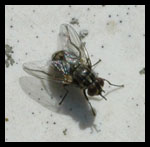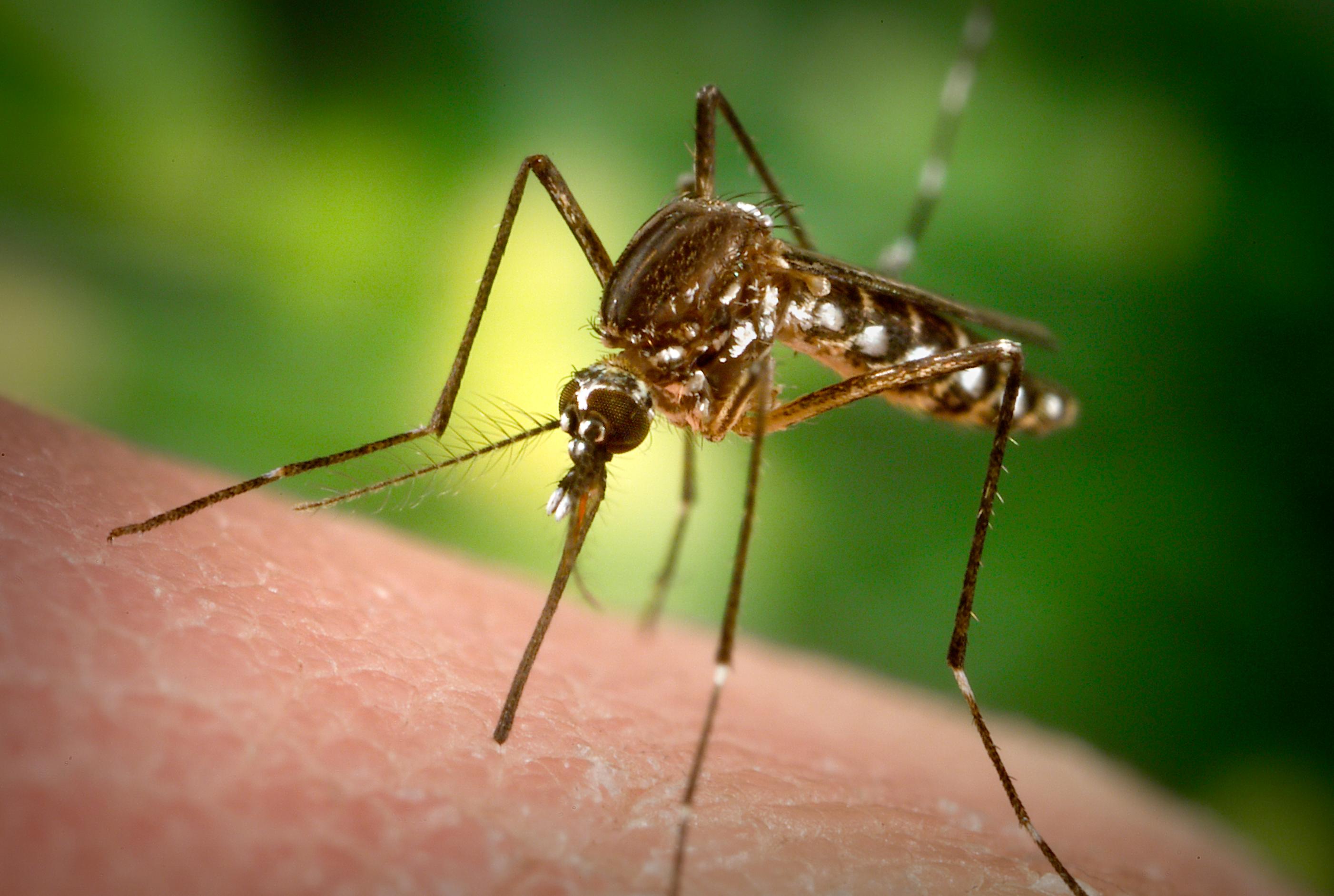Description:
Adult stable flies take one bloodmeal a day from the legs, sides, back and belly of large animals and the legs, head and ears of small animals. They are only in contact with the host for 2-5 minutes and then rest on surrounding buildings or vegetation.
The eggs and larvae are found in wet, decomposing straw found around round hay bales. The larvae occur in decaying fibrous substrates: straw bedding, wet hay, algal mats and wet grass clippings, accumulations of manure from dairy and beef cattle, mixtures of soil and partially composted bedding and animal manure and crop by products.
Animals that are being attacked will stamp and kick their legs, as well as bunch together.
Animals attacked:
Large mammals – cattle, horses, donkeys, dogs, swine, sheep, goats and camels, and zoo animals
Veterinary Impact:
Irritation by the stable fly biting cause cattle to consume less feed, to grow at a slower rate and to convert less feed into body mass. The bunching behavior exhibited by dairy cattle will lead to increased body temperatures lower milk production. The effects are greater when the weather is hot and humid; the bunching interferes with the animals’ ability to dissipate excess heat.
Stable flies have a negative impact on beef production costs by affecting the required amount of time and feed needed to reach slaughter weight. Losses in feedlots will likely occur when the average number of stable flies per leg is 3 or more.
Stable flies are a developmental vector for Habronema microstoma, a spiruid nematode, which causes gastric and cutaneous forms of habronemiasis in horses throughout the world.
Disease Transmission:
Not an important vector of animal pathogens.
Control:
Control is warranted when bunching, stamping and tail switching is excessive or when the economic threshold of 3 stable flies per leg is met.
Three general approaches to reduce problems include:
1) Prevent breeding by making manure unavailable or to dry or wet for the larvae to survive or kill the larvae before they become adults
2) Kill adults before they cause harm or start to produce eggs
3) Exclude adults entrance by using screens or other barriers
Facilities housing animals should be designed for easy removal of manure and cleaning of stalls frequently. Waste should be disposed of properly by either burial, spreading in a thin layer (less than 3 cm) on open fields, submersion in water, or aerobic composting.
Beneficial organisms such as predators, parasites and natural competitors occur naturally in similar breeding locations of the stable fly larvae. These organisms kill the eggs, larvae and pupae of the stable flies providing assistance to the cause. Predatory mites, beetles, and other fly larvae feast on the developingstable fly larvae. Parasitic wasps, referred to as parasitoids, are particularly effective against horn flies and house flies but have shown poor results with stable flies thus far. Dry breeding grounds will encourage beneficial insect and mite development. Some parasitoid wasps can be purchased commercially to enhance the number of wasps present on your property.
Larvicides provide control against developing larvae. Products sprayed directly to the infested breeding sites can be utilized. Many of the larvicides on the market are known as IGR, insect growth regulators, and were developed specifically for horn flies and other filth flies developing in the manure, these do not affect stable fly larvae due to the fact that stable fly larvae do not grow in manure.
Trap options are limited for stable fly adults. A trap referred to as the Olson biting fly trap has a unique design that consists of a special fiberglass panel wrapped in a cylinder and attached to a stake 3-4 feet high. This trap is one of the only effective ways to collect stable flies when the sticky sleeve film is place around it. Many variations of this trap are still being tested with and without pesticides to increase the control measures of stable flies.
Adulticides are very minimal and typically ineffective against stable flies. Due to the short amount of time spent on the animal (2-5 mins) and the location (legs), no products have a long enough residual to be effective when sprayed directly onto the animal. It is also difficult to control stable flies by spraying building and vegetation, residual is low and without direct contact mortality is low.





